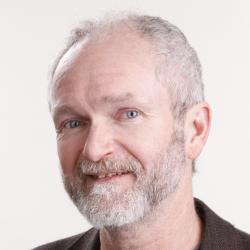The first charter schools in the United States were opened less than 20 years ago. In New York, nearly 200 privately run charters educate as many as 70,000 students, most of them in New York City. State law caps the number of charters at 460, but Albany has raised that limit several times.
In some places, they are much bigger players. Eighty percent of New Orleans’ students and 50 percent of Washington, D.C., schoolchildren are enrolled in charter schools.
Charters were conceived as a way to help school districts fashion instruction for students that traditional schools found hard to reach. The early charters worked within districts. Their teachers were paid the same as district teachers, and their direction came from individuals inside the school district. Best practices at the charters were transferred to district schools.
Times have changed. Today, charter schools are big business. Entrepreneurs including tennis star Andre Agassi and Teach for America founder Wendy Kopp are engaged in the charter industry. Today, 6,000 charter schools enroll about 2 million students, roughly 4 percent of the K-12 population nationwide. If trends continue, this might well be the year when charter school enrollment exceeds the enrollment of Catholic schools in the United States.
While many charters are run by businesses, the Syracuse Academy of Science is a not-for-profit corporation. SAS is one of two charter entities operating in Syracuse. The other, National Heritage, is a for-profit company based in Michigan. It runs the Southside Academy, on Onondaga Creek Boulevard. Recently, a pair of local educators submitted an application for a charter school focused on the arts and athletics. The application will be reviewed by the state and a determination made by the end of the month.
The SAS group, now that it has expanded to Utica, refers to itself as a school district, still unnamed.
The buildings that house the Syracuse and Utica schools are owned by the notfor-profit Terra Science Foundation, which is run by Damkaci and lists the Syracuse Academy of Science address (1004 Park Ave.) as its headquarters.
While Damkaci and Hayali say that theirs are public schools, some educators and, not surprisingly, teacher union officials tend to disagree. Educational historian Diane Ravitch, once a supporter of charters and now an opponent of privatized education, wrote in her recent book, Reign of Error: The Hoax of Privatization and the Danger to America’s Public Schools, that “charter operators want to have it both ways. When it is time for funds to be distributed, they want to be considered public schools. But when they are involved in litigation, charter operators insist they are private organizations, not public schools.”
The state definition of a charter is described simply in a comptroller’s audit conducted last year to review finances at SAS: “A charter school is a public school financed by local, state and federal resources that is not under the control of the local school board.”
Last year Say Yes to Education decided to include the SAS graduates in its college promise. Say Yes to Education offers college scholarships to graduates of Syracuse city schools.
Kevin Ahern, of the Syracuse Teachers Association, disagrees with the notion that charters are public schools, but concedes that his is a minority viewpoint.
When city schools Superintendent Sharon Contreras arrived in Syracuse in 2011, observers familiar with her training worried that she might seek to replace existing city schools with charters. Contreras studied at the Broad Superintendents Academy, a project of the Eli Broad Foundation, and a strong supporter of charters. Ahern dismisses the idea that Contreras is determined to turn city schools into charter schools.
Contreras has said that she could have turned seven West Side schools with poor performance records into charters. That was one of the options the state Education Department presented. Instead, she chose to create the Innovation Zones, combining longer school days, new leadership and more teacher training to turn around those schools. Those are all ideas endorsed by charters being put to work in struggling city schools.



